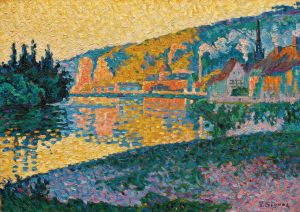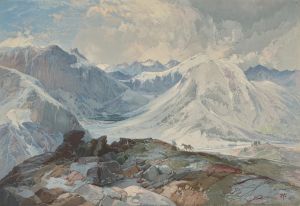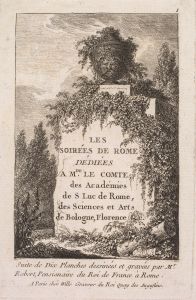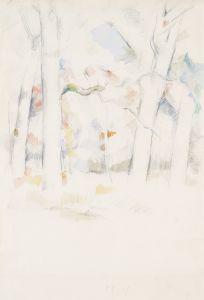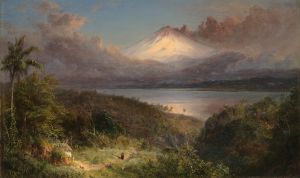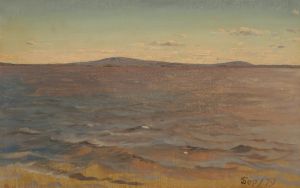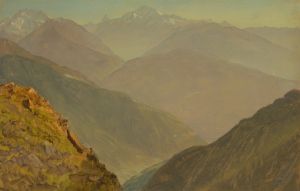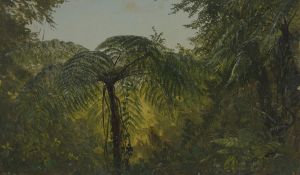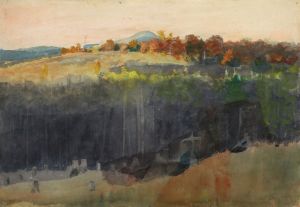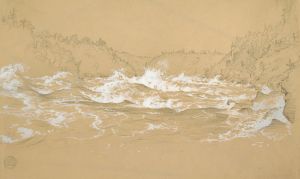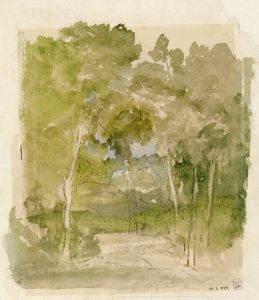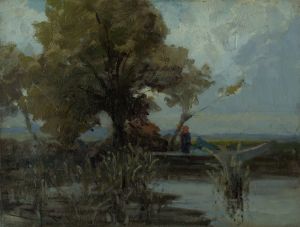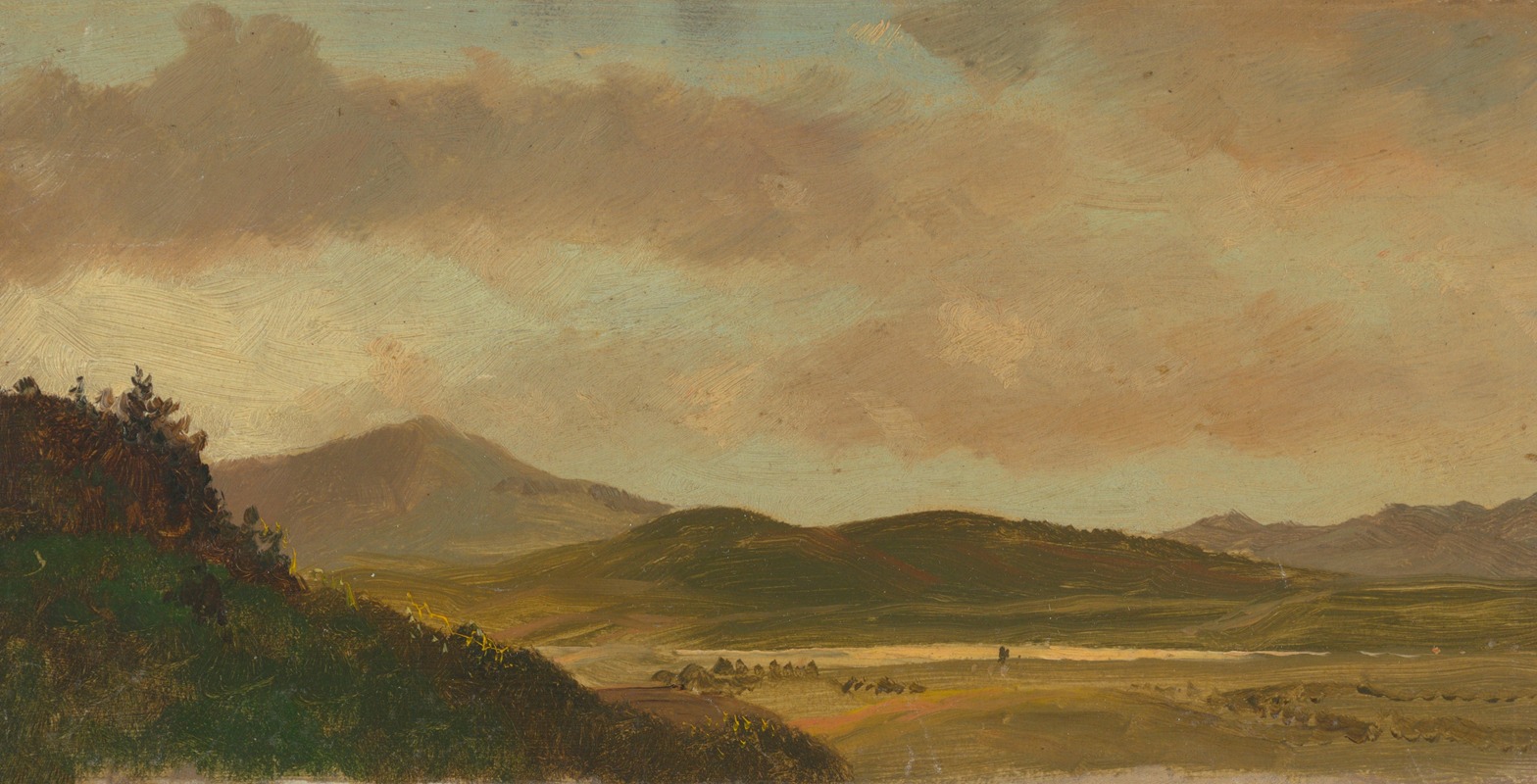
Landscape
A hand-painted replica of Frederic Edwin Church’s masterpiece Landscape, meticulously crafted by professional artists to capture the true essence of the original. Each piece is created with museum-quality canvas and rare mineral pigments, carefully painted by experienced artists with delicate brushstrokes and rich, layered colors to perfectly recreate the texture of the original artwork. Unlike machine-printed reproductions, this hand-painted version brings the painting to life, infused with the artist’s emotions and skill in every stroke. Whether for personal collection or home decoration, it instantly elevates the artistic atmosphere of any space.
Frederic Edwin Church, a prominent American landscape painter of the 19th century, is renowned for his contributions to the Hudson River School, an art movement characterized by its realistic and detailed portrayal of American landscapes. One of his notable works, "Landscape," exemplifies his mastery in capturing the sublime beauty of nature.
Frederic Edwin Church was born on May 4, 1826, in Hartford, Connecticut. He was a pupil of Thomas Cole, the founder of the Hudson River School, and quickly became one of the most celebrated landscape artists of his time. Church's works are distinguished by their meticulous attention to detail, dramatic use of light and shadow, and grand scale, often depicting vast, panoramic views of nature.
"Landscape" by Frederic Edwin Church is a testament to his skill in rendering the natural world with precision and emotional depth. While specific details about this particular painting may not be as widely documented as some of his other famous works, such as "The Heart of the Andes" or "Niagara," it is consistent with Church's style of capturing the majesty and diversity of the American wilderness.
Church's landscapes are often infused with a sense of exploration and discovery, reflecting the 19th-century American spirit of Manifest Destiny and the fascination with the untamed beauty of the continent. His paintings frequently include elements such as mountains, rivers, and lush vegetation, depicted with a keen eye for the interplay of light and atmosphere. This approach not only highlights the physical beauty of the scenes but also evokes a sense of the divine in nature, a theme prevalent in the Hudson River School.
In creating his landscapes, Church was known for his extensive travels, which provided him with firsthand experiences of the diverse environments he painted. He journeyed to South America, the Arctic, Europe, and the Middle East, among other places, drawing inspiration from the varied landscapes he encountered. These travels informed his work, allowing him to incorporate a wide range of geographical features and atmospheric conditions into his paintings.
Church's "Landscape" likely reflects his dedication to capturing the essence of a specific location, rendered with the technical skill and emotional resonance that characterize his oeuvre. His ability to convey the grandeur and complexity of nature has left a lasting impact on American art, influencing generations of artists who followed.
While the specific details of "Landscape" may not be as extensively documented as some of Church's other works, it remains an important piece within his body of work, showcasing his ability to blend realism with a profound appreciation for the natural world. Frederic Edwin Church's legacy as a master landscape painter endures, with his works continuing to be celebrated for their beauty, technical excellence, and ability to inspire awe in viewers.





